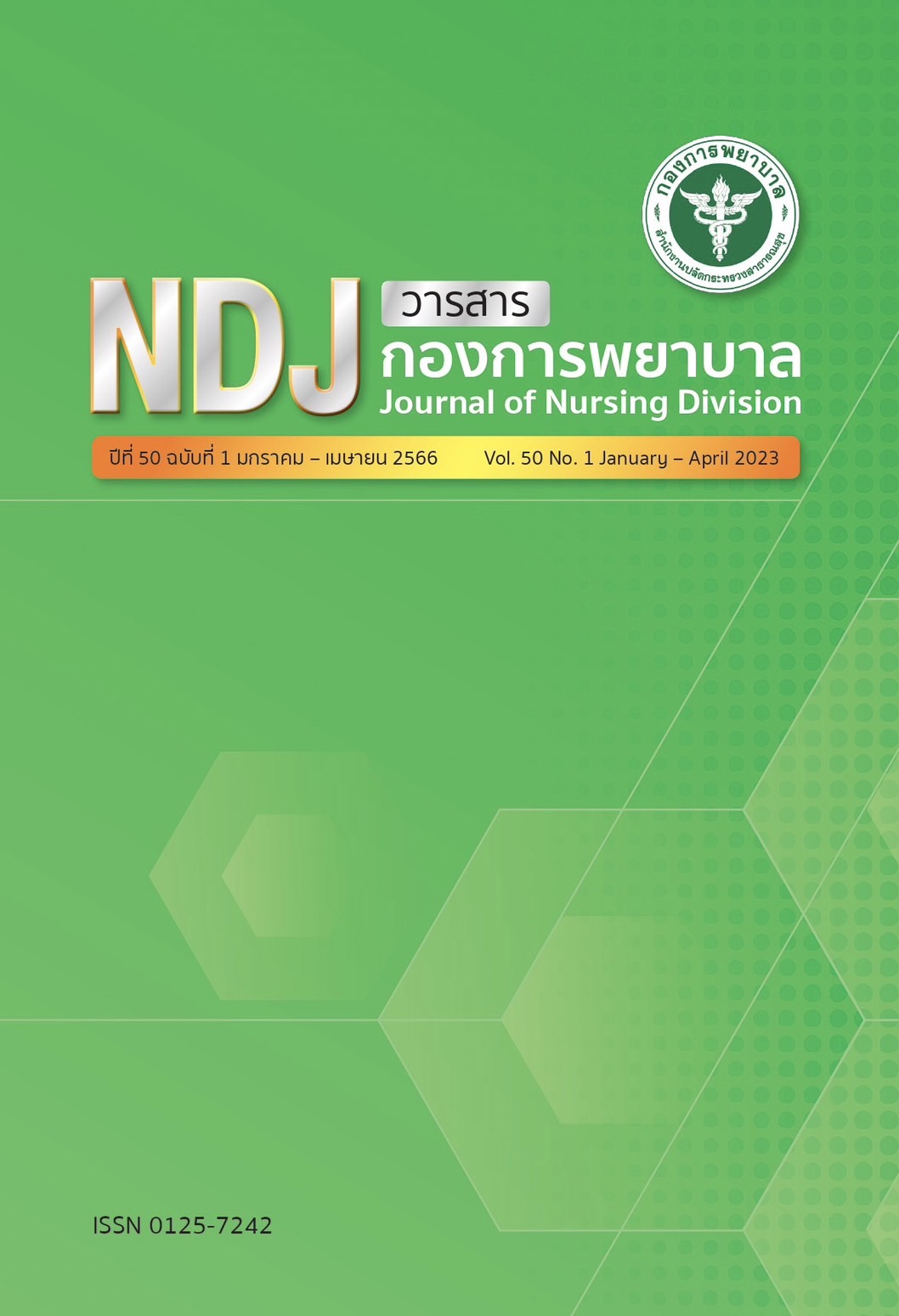Prevention of corneal ulcer in hospitalized trauma patients during the intensive care unit admission: Nursing role
Main Article Content
Abstract
Abstract
Corneal ulcer (CU) is a wounded condition of the cornea leading to infectious keratitis. The causes of UC consist of eyelid abnormalities, difficulty to close the eyes properly, having the eye injury, and decreased level of consciousness due to severe trauma. UC occurs in the intensive care unit approximately3.6-60 % and mostly appears during 2-7 days. CU may result from drug used such as analgesics, muscle relaxants, sedative and environment. In addition, prolonged admit in the intensive care unit is the risk factor of CU. Most of eye preventive measures will be given to the patients after they has passed the critical period, thereby causing severe corneal ulceration including risk of vision loss and blindness. Nurse play important roles on prevention of CU in the accident patients admitted in the intensive care unit until discharge. The 5 steps of nursing process apply in caring these patients include (1) assessment of the patient’s symptoms at first admission (2) establishment of nursing diagnosis (3) nursing care plan construction (4) implementation of nursing care activities to prevent CU (5) evaluation of nursing care to prevent and reduce corneal damages. All of those processes can lessen vision loss, disability, medical expenses and length of hospital stay.
Article Details

This work is licensed under a Creative Commons Attribution-NonCommercial-NoDerivatives 4.0 International License.
References
References
Kousha O, Kousha Z, Paddle J. Incidence, risk factors and impact of protocolised care on exposure keratopathy in critically ill adults: a two-phase prospective cohort study. Critical Care. 2018;22(1):1-8.
Soares RP da S, Fernandes APN de L, Botarelli FR, Araújo JN de M, Olímpio J de A, Vitor AF. Clinical indicators of dry eye severity nursing outcome in intensive care unit. Rev Latino-Am Enfermagem. [Internet]. 2019 [cited 2023 Jan 27].
Available from: https://www.scielo.br/j/rlae/a/9b8zpvRqWrnzNTHsD5HM6SL/?lang=en&format=html#
Shaeri M, Mahdian M, Akbari H, Asl SA. Incidence and related factors of surface eye disorders in traumatic intensive care unit patients in Iran. International Journal of Burns and Trauma. 2021;11(4):344-349.
Ceylan I, Korkmaz H, Ulutas H. Eye care in intensive care in COVID-19 era: a prospective observational study from Turkey. Eur Rev Med Pharmacol Sci. 2022;26(6):2165-70.
Sansome SG, Lin P-F. Eye care in the intensive care unit during the COVID-19 pandemic. British Journal of Hospital Medicine. 2020;81(6):1-10.
Woodfield D, Tanner DL. Complicated Neurotrophic Corneal Ulcer in a Patient with Multiple Autoimmune Disorders. CRO (Clinical & Refractive Optometry) Journal. 2022;33(4)1-7.
Mack HG, Fazal A, Watson S. Corneal ulcers in general practice. Australian Journal of General Practice. 2022;51(11):855-60.
Sridhar MS. Anatomy of cornea and ocular surface. Indian journal of ophthalmology. 2018;66(2):190.
Barrientez B, Nicholas SE, Whelchel A, Sharif R, Hjortdal J, Karamichos D. Corneal injury: Clinical and molecular aspects. Experimental eye research. 2019;186(1):1-13.
Chopra A, Solanki S, Sharma R, Gupta RK. Microbial profile of infectious corneal ulcer in a remote Himalayan teaching hospital in Himachal Pradesh (India). Journal of Clinical Ophthalmology and Research. 2022;10(3):1014.
Kenia VP, Kenia RV, Pirdankar OH. Diagnosis and management protocol of acute corneal ulcer. Int J Health Sci Res. 2020;10(3):69-78.
Stamate A-C, Tataru CP, Zemba M. Update on surgical management of corneal ulceration and perforation. Romanian journal of ophthalmology. 2019;63(2):166-173.
Hearne BJ, Hearne EG, Montgomery H, Lightman SL. Eye care in the intensive care unit. Journal of the Intensive Care Society. 2018;19(4):345-50.
Mary E.S AL. Ophthalmic Nursing.5thed. Oakville2017.
de Araujo DD, Silva DVA, Rodrigues CAO, Silva PO, Macieira TGR, Chianca TCM. Effectiveness of nursing interventions to prevent dry eye in critically ill patients. American Journal of Critical Care. 2019;28(4):299-306.


